Episode #49: Giving Our Sons the Gift of Sound (Part 2): Raising Deaf Children with Cochlear Implants
Show Notes: This is the second half of my recent conversation with Felicia Aquilo, the mother of two young boys who were born profoundly deaf. She and her husband, Steve, have faced the challenge of giving their boys the gift of sound; equipping them with cochlear implants, teaching them to speak as well as sign language, and helping them appreciate music and other sounds. Join us as we hear from Felicia about her journey, her sons’ progress, and her very real hopes for their futures. This is part 2 of Felicia’s story. Be sure to catch the first part in Episode #48! In part 1, Felicia shared her “facts” for the game of “2 Truths and a Lie.” Can you guess which statements Felicia shared were her truths and which was her lie? Post your best guess in the comments below. We’ll post the correct answer on Instagram @water.prairie next week so be sure to check and see if you were right. 2 Truths and a Lie: Felicia loves cooking and wanted to be on Master Chef Felicia enjoys training and running marathons Felicia’s known how to snow ski since she was 2-years-old Follow Felicia on Instagram: @feliciaaquila Hands and Voices, a resource for families of deaf children: Instagram: @handsandvoices Website: www.handsandvoices.org Connect with Us: https://linktr.ee/waterprairie Support this channel: https://www.buymeacoffee.com/waterprairie Music Used: “LazyDay” by Audionautix is licensed under a Creative Commons Attribution 4.0 license. https://creativecommons.org/licenses/by/4.0/ Artist: http://audionautix.com/
The Water Prairie Chronicles Podcast airs new episodes every Friday at Noon EST!
Find the full directory at waterprairie.com/listen.
Advice for Parents Considering Cochlear Implants for Their Deaf Children
Show Notes:
This is the second half of my recent conversation with Felicia Aquilo, the mother of two young boys who were born profoundly deaf. She and her husband, Steve, have faced the challenge of giving their boys the gift of sound; equipping them with cochlear implants, teaching them to speak as well as sign language, and helping them appreciate music and other sounds. Join us as we hear from Felicia about her journey, her sons’ progress, and her very real hopes for their futures.
This is part 2 of Felicia’s story. Be sure to catch the first part in Episode #48!
In part 1, Felicia shared her “facts” for the game of “2 Truths and a Lie.” Can you guess which statements Felicia shared were her truths and which was her lie? Post your best guess in the comments below. We’ll post the correct answer on Instagram @water.prairie next week so be sure to check and see if you were right.
2 Truths and a Lie:
- Felicia loves cooking and wanted to be on Master Chef
- Felicia enjoys training and running marathons
- Felicia’s known how to snow ski since she was 2-years-old
- Follow Felicia on Instagram:
- Hands and Voices, a resource for families of deaf children:
- Instagram: @handsandvoices
- Website: www.handsandvoices.org
Connect with Us: https://linktr.ee/waterprairie
Support this channel: https://www.buymeacoffee.com/waterprairie
Music Used: “LazyDay” by Audionautix is licensed under a Creative Commons Attribution 4.0 license. https://creativecommons.org/licenses/by/4.0/ Artist: http://audionautix.com/
Episode #49: Giving Our Sons the Gift of Sound (Part 2): Raising Deaf Children with Cochlear Implants
Advice for Parents Considering Cochlear Implants for Their Deaf Children
(Recorded January 31, 2023)
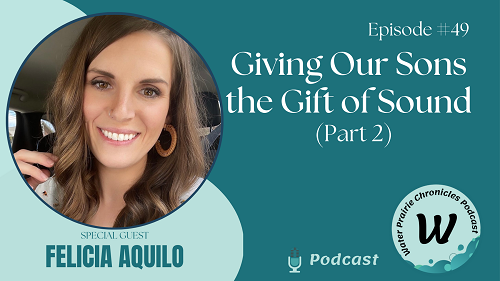
Welcome to the Water Prairie Chronicles, a podcast created to encourage and support parents of special needs children. I’m Tonya Wollum, and I’m glad you’re here. Today’s episode is the second part of an interview with Felicia Aquilo, the mother of two boys who were born profoundly deaf and now have cochlear implants.
I first met Felicia when I reached out to her through her Instagram account. She graciously accepted an invitation to share her personal story with you in this interview, and I think you’ll be encouraged by her story. If you miss part one of the interview, be sure to go back and listen to that, and I’ll put a link in the description below.
Now, let’s join in on the interview as Felicia shares her story, how the boys are adjusting to their implants, and how they’re learning to speak through both spoken and sign language.
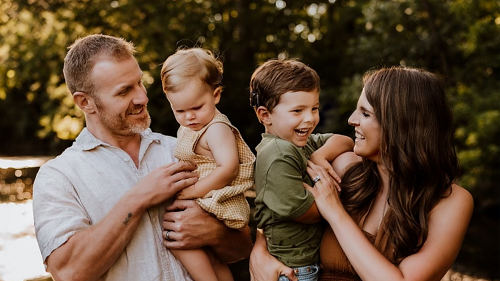
I’m going to let them do whatever they want to do. Cause I’ve always told them, you know, you’re capable of doing whatever you want to do, but we’ll see.
Have the boys needed to have any type of therapy? Do they work with a speech language pathologist? Do they work with anyone special like that?
Yeah, so in the beginning, the first three years, they were set up, well, Silas was set up with a speech and language pathologist from the Help me Grow program.
It took me a little bit to get kind of set up with her the first time, but she was wonderful. She helped me through the whole process, got me hooked up with, you know, other people, other families going through the situation that I was, and just kind of giving me ideas for language activities and ways to get the boys talking and things like that because it’s actually virtual.
They don’t come to your house anymore, so, okay. It was obviously, I’m not gonna get my, my 10 month old up on the computer and participate in language activities. So I always tell anybody that asks me that your speech, especially when they’re young, like 1, 2, 3, even four when they’re that young, speech pathology appointments, speech therapy appointments, audio, verbal therapy appointments, they’re for the parent to learn how to do the activities at home.
Because at home it’s not gonna, the magic isn’t happening during the 30 minute session once a week. It’s at home all the other times. So it was, it was really good to be able to learn from her. And then after Silas also had a speech therapist and an audio verbal therapist throughout that time too. So there was a total of three on top of his audiologist and ENT.
So there was a lot of professionals helping us here. Yeah. And now he is actually in an oral preschool for deaf children in our area. Um, they’re the closest school that we have for deaf kids for that. Actually the deaf culture, ASL deaf school is two hours away. So right now, that’s not really an option for us.
So we chose to go to this program. He’s doing amazing. He gets a lot of speech therapy, audio, verbal therapy, and he has a teacher of the deaf, so they do wonderful with him. And then Isaiah, we were able to have the same kind of set up that Silas had, although this time we added a deaf mentor to the mix.
So the deaf mentor, what role were they playing?
So our deaf mentor, she basically, teaches me about her life experiences. She helps me with the language. Okay. So I have somebody to practice with, um, ways to get the boys signing, um, ways to get our family involved with signing. She teaches me basically experiences that she went through and deaf culture and deaf community, all of those things, but experiences that she’s had that could better prepare me to understand situations that the boys may or may not go through.
But things that I, as a hearing person, wouldn’t necessarily get moving forward. It’s a hard pill to swallow when you have to think about the fact that they are living a completely different life than what you are used to. So having a deaf adult to help them keep their deaf identity and to find their deaf identity, even if that’s not me as their mom.
I feel that they need that person in their life.
That’s a fantastic tool for you to have that resource there and to have a connection. I mean, not just to meet with them once, but to have someone in that mentoring role. I wasn’t aware that was an option.
This time around, it was offered through our Help Me Grow program, our Ohio Help Me Grow program.
But there are, in every state, there are places that you can find deaf mentor help.
So a parent that’s listening, say from Tennessee, where would they go to find that type of contact?
Tennessee Hands and Voices would probably have, uh, I know that every state has a Hands and Voices program, uh, and they have a Facebook page. So that would be my first place to look. And then other place would be to search on Instagram or um, another Facebook outlet to try to find something like that.
So they would just, if they searched Hands and Voices, they would find it for each state?
Most likely find them, find one for their estate. Yes.
Okay. Do you know if there’s a national organization?
I believe.
So. If we’re able to find that, we’ll put that in the notes as well for those that are listening, just to get ’em started. At least with that, cuz this is helpful information because you had to find it yourself. But if we can pass this on to others, it’s gonna get them started with that.
But love the idea of having a mentor. I think that’s fantastic.
It’s definitely, I wish I would’ve had one with Silas.
Yeah. Cuz it’s, I mean, to try to simulate what they, what their life is for you yourself, you’re bringing in a history of hearing. You know what? You may see something, even if you can’t hear at that moment, you know what’s happening. Because that’s always been part of what, what you’ve experienced. I really like that.
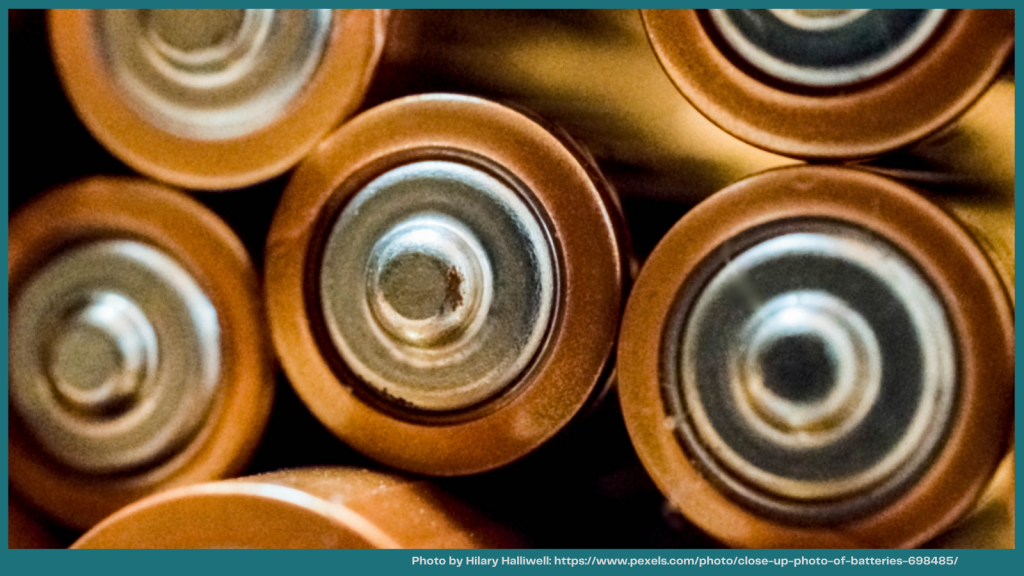
Uh, you’re talking about the batteries, so I’m, how often do you have to change the batteries or are they rechargeable where they last for a long time?
So Silas used to wear what’s called a Canzo processor, and it is an off the ear option because he really disliked his hearing aids.
So we knew that, um, something off the ear might be a better situation for him. In those original canzo processors, it was disposable batteries that would only give us about 22 to 24 hours of sound. So I was changing them quite often.
Once a day.
Yeah. I was changing them quite well. It seemed like every two, because he wasn’t wearing them dur during the time that he slept. Yeah. So it was about every two days we were changing them and that could get quite expensive. Um, and then when Isaiah was born and he got implanted, we thought that he would love the canzos as well. However, they came out with what’s called the Canzo two processors. And it is a, New and improved version of the canzo processors.
However, we found it to be quite annoying , so we, yeah, we switched them both to the N seven processors, which is what you see on them now, the over the ear processors and they have both rechargeable batteries and disposable battery options. So we try to use the rechargeable as much as possible, but we keep a lot of disposable batteries on hand for emergencies.
Anytime we have a couple extra dollars, it’s like, let’s get batteries. .
You had said that you originally were thought that you would wait and make this decision after Silas could tell you whether he wanted to or not. But that changed because of, of what you were learning. How do you involve the boys now and I’d say Silas more than Isaiah, just because of their age, um, and decisions that are happening and just even talking about the cochlear implants?
Well, one of the things, the big things that he’s learning in his program that he’s in and something that we work on really heavily at home is self-advocacy. So he will tell me if something is wrong with his processors or if he needs, uh, hearing break, if he needs to take them off.
If he doesn’t wanna wear them, cuz he has a headache. Um, if any of those things he has to, it’s his job to tell me. As far as caring for them, he will at nighttime go and plug them in at his, um, charging station, like plug the batteries in. And he’ll put them in the, um, the dry kit most nights. Some nights we forget, but we have what’s called a dry kit where they, it sucks all the moisture out of them to give them a longer life.
Okay. Um, so he does that. But as far as other things, I mean, he does. full control over when and where he wears them and how, like his method of communication. So that’s pretty much the biggest decision, you know, and he, at school, he’ll tell them when his battery dies or something along those lines too.
Right. Are, are many of the other children in his school also wearing implants?
I believe there’s 11 of them right now and eight of them have devices and the other ones are what you would call like typical language models. So they model average language for their age group. Now he’s, he’s at, uh, a different school now where they’re addressing his, his, his deafness.
Um, will you keep him there or do you think he’ll move to the local school eventually?
So he’s actually on track. They, there’s only three years of this oral preschool and then they mainstream them into a normal, mainstream your district, um, kindergarten program. We actually just had his parent teacher conference, and it was all about the transition from kindergarten or from preschool to kindergarten, and I was slightly freaking out because he’s no longer going to be in his little bubble of peers just like him with Teacher of the Deaf and a program that was literally designed for kids like him.
Like they’re not going to have that anymore. So the whole thought of transferring him out of this where the teachers may not know exactly how to deal with devices or not understand, you know, his, his needs in the classroom as far as, you know, making sure they’re looking directly at him when they’re talking or using their, his microphone that’s around their neck so it gets Bluetooth directly into his pressors.
Like it’s, it’s a lot and it’s very scary to know that I’m going to have to make sure that all these things are happening. So that he has the ability to learn and to understand and, and comprehend and be included in what’s happening in his classroom.
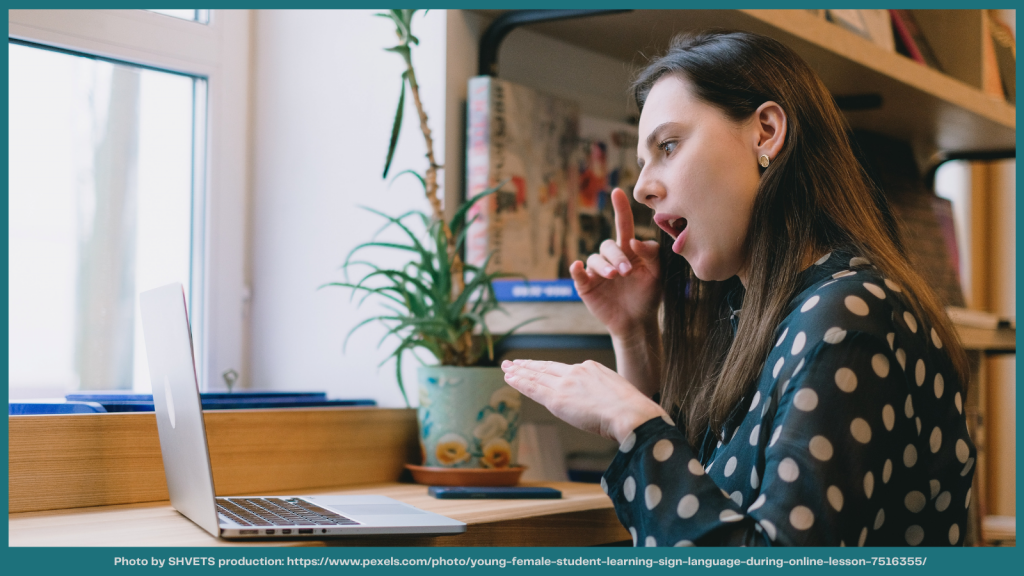
You mentioned earlier, ASL. So the boys are, so they have the cochlear implants. They’re hearing sound, Silas is in a school where they do speak. So he’s getting the speech therapy. But you’re also working with ASL, correct?
Yes. I am learning sign language very slowly, but consistently. Every day we work on more, um, we implement new words. I just actually finished ASL at one of our local colleges.
Um, I haven’t started this semester yet just because of certain situations with transportation and getting there and babysitters and all of that, but making sure that the boys have ASL, which is their most natural language. The easiest language that comes to them is very important to us because I don’t, like I said, I don’t make them wear their processors if they don’t choose to, and if they’re getting a bath or getting going to bed or we’re out and about and they decide that they, um, don’t wanna be wearing their processors anymore.
I need a way to communicate with them and I’m not going to put the responsibility of them reading my lips on my five and three year old. I don’t feel like that’s, that’s right. They need a way to be understood and and included and, and get conversation from, especially their mom that is not pressure on them to be doing it all.
So that’s why I feel that having ASL not only to fall back on, but to have for their future is so important. You know, in 10 years they could decide that they don’t wanna wear their processors anymore and take them off. And if they didn’t have sign language, then what? Like if we didn’t know sign if. If they didn’t know, if I didn’t know, it would just, I never want my kids to feel like they can’t communicate, especially with their family.
So that’s why we chose to do both.
Is your husband learning as well?
He is, yes. And my parents, my parents are. I’m not biased or anything, but I, they have the best grandparents ever.
As every child should. But good. I’m glad you have that support as well. So you’re learning it. Is Silas’s school, the preschool that he is in, do they work with ASL as well?
No, that is just a strictly oral, yeah, an oral school there. Like I said, there is a, um, a deaf school two hours away, and that’s something that we’ve considered to, like, if he decides if he wants to go to a deaf school where they use asl, that is something that we’re not going to tell him.
Like, no, you can’t do that. You’re not gonna do that. Right. We will make this, we’ll make it happen however we have to make it happen. Whether that’s Steve having to transfer and get another job, or however, I never wanna tell my kids that they can’t go to a certain school because of the way they communicate.
Unfortunately, there are no programs close to us that are strictly asl, so it would have to be a pretty good commute or a different situation for that to happen.
Have they told you as, because the speech that the boys are hearing, are they hearing clearly all the words that are being spoken to them, or is it certain sounds that they’re hearing?
They don’t hear like hearing people hear. So basically it’s just a tool to access sound and nothing that they’re hearing is exactly like we hear, if that makes sense. So they have to learn how to recognize relevant sound and pick out what is meaningful sound. So I’m sure you’ve heard of incidental learning where something is just picked up because it just happens in the background and they, they learn it. Well kids with cochlear implants, everything has to be taught to them intentionally. Um, so they have to be taught what a, a dog sounds like when they bark, or the door slamming. What that sounds like. Um, what the car door slamming is, uh, a, a horn beeping. So everything is very intentional and the amount of language that they need is insane.
Teach with Intention!!! Share on X
Like I am constantly, I narrate my day all day long because they need all of that language. So I talk to myself on a regular basis, just going through my motions because they need all of those words to be able to understand and recognize. And just because they’re hearing the words or the sounds and they’re hearing those words, does not mean that they’re understanding or comprehending what’s going on.
We had talked a little bit too about, um, so we’ve got the, the ASL there. Will the boys once they’re in regular school, will they have an ASL interpreter for their classroom? Will they always use the voice, the sp, the microphone?
That’s something that I am going to see if Silas wants when he goes to school. It might not be in kindergarten, but first, second, third grade, I’m going to ask him like, do you want an ASL interpreter?
And that is something that I’ll definitely have to advocate for, um, because it’s not just something that’s easily given because they, a lot of times they don’t wanna fork out the extra, the money to pay an interpreter, but it’s their job to do that. So if, if it’s something that he thinks is necessary or I think is necessary for his learning, I’m a hundred percent going to be that annoying mom. Like bring an interpreter into his classroom and that’s what’s gonna happen. So.
When you get a chance, listen to, there was a mother daughter that I interviewed. Um, Heather is the daughter. And, um, it was, it was during, during season one. Heather talks about being in, I dunno if it was middle school or high school, when she “fired” her interpreter because she realized that it was, not a good fit to have someone in there and she did better talking to her friends and getting their notes.
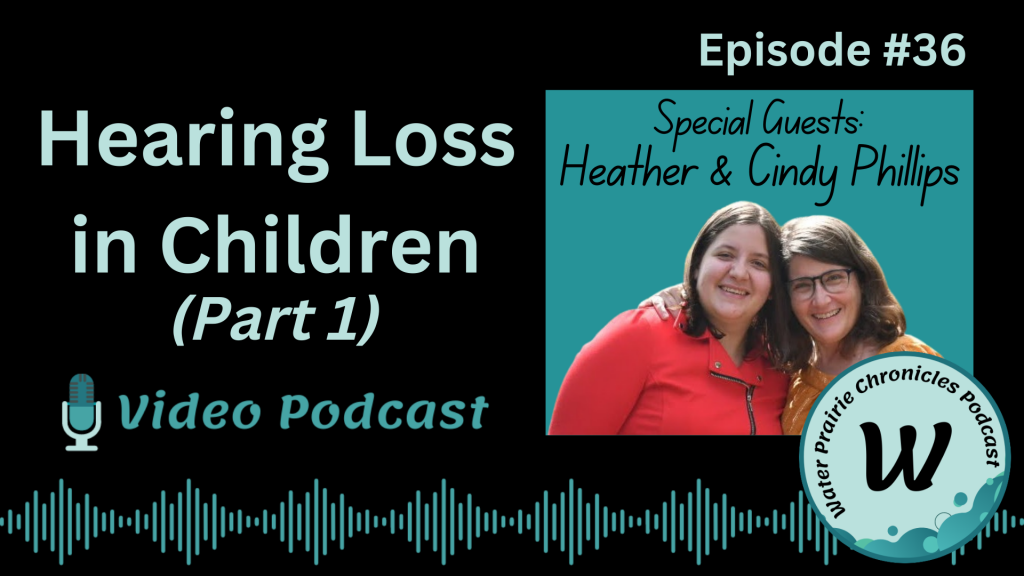
Episodes #36 and #38.
Um, but it might, it might give you, um, some ideas too of what’s, what’s down, down the road. Some of the Yeah. The things to ask, even when you’re going into these,
That’s where we’re at. Just trying to see what works for us and going with the flow and, you know, residential is not something that I would love to do because it’s so far away.
Um, which is why I would want to move if possible. , but nothing is off the table. Even homeschooling, we’ve discussed homeschooling before and bringing in, you know, a deaf mentor to do that aspect of it. Just because we wanted to homeschool before we even knew they were deaf. And now, right now in this situation, he’s thriving in his school that he’s in, but it’s never off the table.
You know, we’re gonna reevaluate the situation as often as we need to, to know what’s the best fit for him or both of them really. .
Right, and today there’s so many different options because. If, if you do homeschool, there’s other ways to get those services, even if you’re homeschooling. So it’s not a yes or no. It has to be one or the other. It can be a combination of things too. So just finding those, those resources to, to know how you’re going. Um, I do wanna, I know we’re getting close to when we need to finish here, but I did wanna get into how are you navigating the different opinions, and perspectives within the deaf community regarding the cochlear implants?

In the beginning, I found it very hard to hear the differing opinions. So if somebody, The negative comments that I was getting because the boys were, or Silas was already implanted, or, um, someone who didn’t necessarily believe in cochlear implants or believed that they should have the opinion, have the decision to make themselves when they’re older.
Um, it got to me a lot in the beginning. It was, it was very hard. Yeah. Because before I saw how wonderful everything was and how great it was going to be, and how much he loved his relationship with sound, I was questioning. , am I making the right decisions? Did I do the right thing? Is this the right, you know, path for us?
But as time went on and I got more confident in my situation, those comments, maybe I just don’t see them as often because I don’t, I’m like, I don’t care anymore. But they seem to be fewer and far between and not as often. And I’m, I’m very, I’m 110% confident in the decision that we made in the route we’re taking, because I know that in the future, My, my boys have the, the opportunity to develop spoken language.
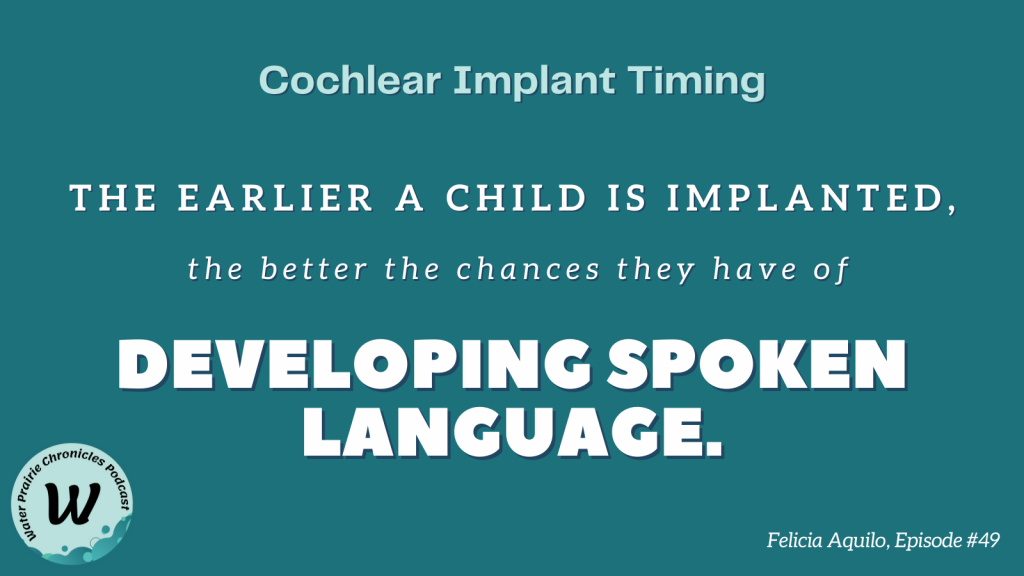
I don’t know if we talked about this or not, but the earlier a child is implanted, the better the statistics show, the better the chances they have of developing spoken language the later they wait. , the harder it is for them to develop spoken language, which is why we decided after all to do it earlier rather than wait until later.
So at this point, giving them access to develop spoken language and giving them access to ASL when they turn 13, 14, 15 years old, they have a decision that they can make because they have both fully developed languages. That’s my thought process. , I’m sticking to it. That’s, you know what I mean? Like .
Well, I think you’re giving them the best of both worlds because they have a choice now.
They. If you had only done one or the other, there’s no choice yet because you’ve kept one choice from ever being entertained.
And they could have, they could have been implanted at a later age. But that’s not, it’s not saying that they would’ve been able to develop fully spoken, like to be able to speak. Know what I mean? Like it’s, it’s emotional for me, but , I, I, as time went on, I was able to better deal with, I was better equipped to deal with the negative comments and honestly, I don’t see them as much anymore. Um, and that’s, I’ll block people. Like if you’re not gonna have anything nice to say, if you don’t wanna hear differing opinions.
If you can’t accept differing opinions, like, I don’t need you in my space. Um, right. And that was hard for me to do in the beginning, but now it is. It’s okay.
What advice would you give to other parents of deaf children that are considering the cochlear implant surgery?
I think that the biggest thing is talking to as many people as you possibly can.
Um, online and in person, finding as many people that you can that have been there, that have walked this path, that have implanted their kids, that have had implants themselves, that don’t believe in implants. The doctors, the, the audiologists, get all of the information that you possibly can because the route that I’m taking might not be the route for you, but you can make an educated decision for yourself and for your family if you have all of the information and not just pieces and bits and pieces that somebody’s given you. You need all of it.
Let’s see. Is there anything else that I haven’t asked you that I, that I should have asked or that you wanted to share?
I just, I think that, um, with a better understanding of cochlear implants and how cochlear implants work, a hearing person can better support somebody in this situation.
You know, ask them their preferred method of communication. Um, remember that when you’re talking to a deaf person, even with or without cochlear implants, to speak to them. Look at while you’re looking at them so they can see your mouth. Um, remember that background noise really affects the way that they perceive noise, the way they hear noise so if they don’t hear you, don’t jump to conclusions like they’re ignoring you because that’s not the way it works. Um, just a better understanding. And I was even, you know, in the beginning, I, my boys were the first, well, Silas was the first deaf person that I had ever met. Um, and I did not know a thing about hearing loss, cochlear implants, hearing aids, deaf community, deaf culture, sign language, even.
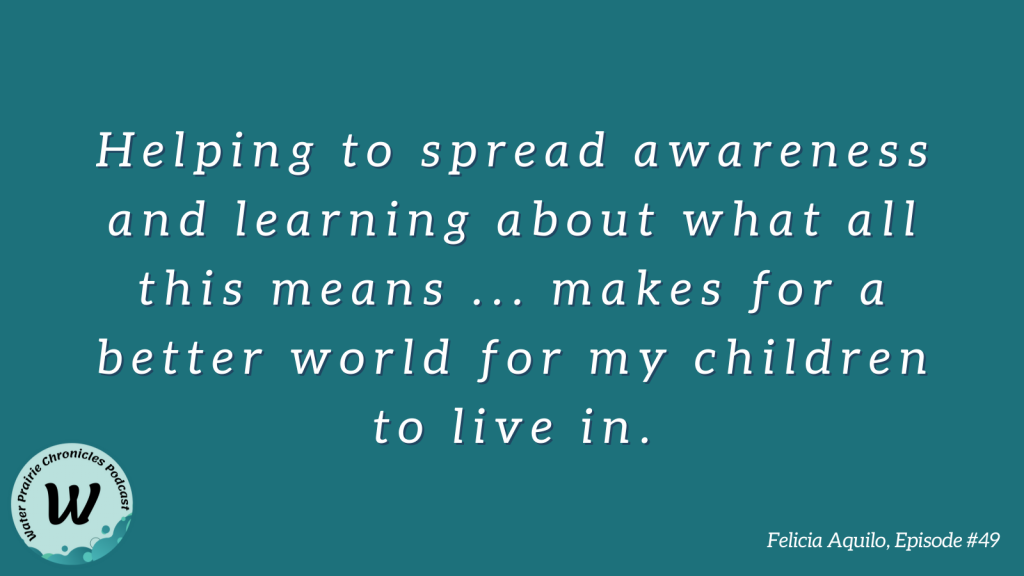
So just ha helping to spread awareness and learning about what all of this means is just it. It makes for a better world for my children to live in. So that’s why I’m doing this.
This is what I really appreciate what I see on your post. They’re, um, you, you’ve been really honest about some of the posts that you’ve had are, you know, it is just, just not a, not a good day.
But I think it’s good for people to see that you’re a typical mom with typical kids. Not everybody has a good day.
Felicia, thank you for taking some time to share with us your journey, how it’s starting here. You got a lot of years ahead of you here, some exciting time to figure out who your sons are going to become as, as they grow up.
But it’s, it, it’s fun hearing some of your stories here. Um, some of them were a little bit harder for you, but hopefully you’re gonna make it easier for the next group by hearing what, what you’ve shared with us. So, so thank thank you for being open and honest with us today about this.
Thank you so much for having me. It was so much fun.
This podcast is made possible by support from our listeners. If you wanna help offset the cost of producing the Water Prairie Chronicles, become a supporter at buymeacoffee.com/waterprairie.

You’ve been listening to The Water Prairie Chronicles, a podcast created to encourage and support parents of special needs children.
If you found value in this episode, hit the like button and subscribe so you don’t miss future episodes of the podcast. I’m glad you were able to join us today, and I hope to see you back next week for another episode of the Water Prairie Chronicles.
Meet Today’s Guest:
 Felicia Aquilo is the proud mother of Silas and Isaiah, 2 boys who were born profoundly deaf and have received bilateral cochlear implants. Felicia and her husband, Steve, are raising the boys by teaching them to speak and to use sign language. They are hearing parents, but they are doing an awesome job of learning the skills they need to make communication easy for their sons! Felicia is active on Instagram and can be found @feliciaaquilo.
Felicia Aquilo is the proud mother of Silas and Isaiah, 2 boys who were born profoundly deaf and have received bilateral cochlear implants. Felicia and her husband, Steve, are raising the boys by teaching them to speak and to use sign language. They are hearing parents, but they are doing an awesome job of learning the skills they need to make communication easy for their sons! Felicia is active on Instagram and can be found @feliciaaquilo.
